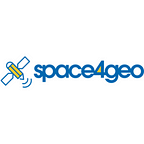Occupational Profiles in the EO/GI Domain — A Trend Analysis from the EO4GEO Project
EO4GEO develops curricula and training material for preparing the workforce of tomorrow for their daily tasks in their job. A key requirement for this objective is the identification of tasks and duties that the EO/GI workforce needs to master in their jobs and how trends might affect these tasks.
Authors: Barbara Hofer, Stefan Lang (PLUS)
One of the big endeavours of EO4GEO is to identify relevant occupational profiles in the EO/GI sector that should be considered in training programmes for the future workforce. Occupational profiles are the knowledge, skills and competencies required for fulfilling tasks related to a specified job. One source of information about occupational profiles are job advertisements. In this respect, Gruijthuijsen et al. (2019) [1] performed an analysis of the skills and competencies required for certain occupational profiles in the EO/GI sector. They used profiles mentioned in ESCO, the European multilingual classification of Skills, Competences, Qualifications and Occupations (European Union, 2017) [2] as starting point for searching for job advertisements in the business oriented platform LinkedIn and analysed the skills and competencies required by potential applications.
Another EO4GEO study focused on illustrating future occupational profiles based on scenarios from changing workflows (Hofer et al., 2019) [3]. This study started with the collection of duties and tasks of the profile of a remote sensing (RS) specialist by a group of experts following the ‘design a curriculum approach’ (DACUM). Once duties and tasks were documented, the required skill levels to complete the tasks and expected effects of trends in the sector were mapped to the tasks. This led to an illustration of tasks, which are expected to change, as shown in Figure 1 (Hofer et al. 2019).
One observation when working with occupational profiles is that labels such as GIS or RS specialist, analyst, technician, developer or consultant, are different flavours of profiles with a common core. The identification of this core can support the design of training programmes at a later stage in the project. To make progress on that point, the approach developed by Hofer et al. (2019) has been implemented by 12 EO4GEO partners, who contributed a total of 16 occupational profiles. This was the starting point for a combined analysis of these profiles — where a subset of 11 profiles was analysed, which focused on analysis and research work in GIS and RS rather than education or sales. The detailed analysis of these 11 profiles is documented in a Github repository.
The challenge when aiming at identifying the core duties and tasks across 11 profiles, is to reduce the number of labels used as long as they are semantically similar. Starting from 51 duties and 406 tasks, the mind mapping software VUE was used to identify related terms that were then included in a summarized Excel sheet. The number of duties was reduced to 19; the number of tasks to 295.
The following table (Table 1) lists the combined set of duties across 11 occupational profiles that are ordered according to the number of profiles mentioning this duty (number given in percent). This table shows the duties that are commonly included in occupational profiles in the GIS and RS domain.
For every duty, a cross-sectional table was generated that lists the tasks provided for that specific duty in each occupational profile. These cross-sectional tables were color-coded with skill levels associated with the tasks and the possible impact of identified trends. An example for the duty “data pre-processing” is shown in Figure 2 with colour coding for required skills.
Conclusions derived from this analysis of duties and tasks are:
· There are duties that appear across profiles in the EO/GI domain.
· There are core tasks per duty that appear across profiles.
· Specific tasks listed in profiles depend on the type of organisation and details of the work performed.
· A high number of tasks require competencies and experience rather than technical skills only.
The work on duties and tasks continues with the collection of business process descriptions that add additional information on workflows and sequences of tasks as well as involved stakeholders and communication between stakeholders. Overall a solid basis for deriving occupational profiles for the EO/GI domain as well as workflows and core tasks is created in EO4GEO for the development of curricula and learning materials.
Acknowledgements
Many thanks to the EO4GEO partners who contributed to this study! In alphabetical order: CNR-IREA, EPSIT, FSU, GIB, IGEA, IGIK, ROSA, UNEP-Grid, Planetek, UPAT and VRI IES.
References
[1] Gruijthuijsen,W., Pontes, S., Vancauwenberghe,G., Vandenbroucke, D. and Olijslagers, M. (2019) Understanding skill needs in the EO/GI sector: a job advertisements analysis, short paper at AGILE 2019 — Geospatial Technologies for Local and Regional Development. Available here.
[2] European Union (2017) ESCO handbook. Luxembourg, Publications Office of the European Union. Available here.
[3] Hofer B., Lang S., Ferber N. (2019) Future Occupational Profiles in Earth Observation and Geoinformation — Scenarios Resulting from Changing Workflows. In: Kyriakidis P., Hadjimitsis D., Skarlatos D., Mansourian A. (eds) Geospatial Technologies for Local and Regional Development. AGILE 2019. Lecture Notes in Geoinformation and Cartography. Springer, Cham
